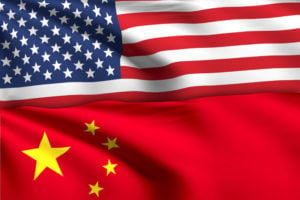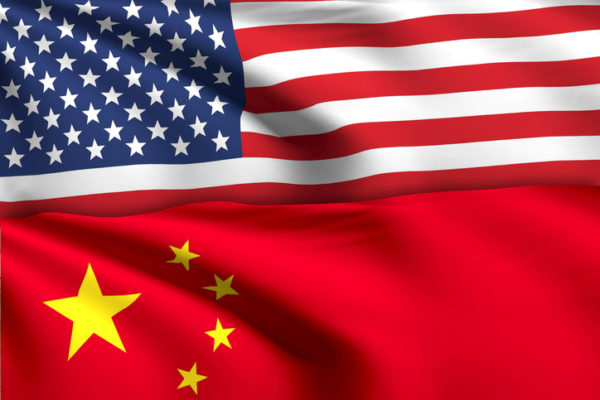
The recent trade war between China and the United States has everyone a little worried and a little confused about how the latest round of tariffs will impact the economy and individual businesses in both the long- and short-term, particularly among wholesale distributors. This was immediately evident during the recent NetSuite webinar, “A Candid Conversation About Tariffs.”
Not only did the session draw a large, highly-engaged audience, they came prepared with detailed questions. Here is a sampling of what was asked during the webinar and answers based on our understanding of the new regulations and experiences working with wholesale distributors.
If companies enact higher prices on products due to tariffs, what should they do if/when the tariff is removed?
That’s going to depend a lot on each business case, but there are a number of options here. Businesses can begin by phasing out slow-moving products or products that no longer make financial sense to carry and avoid that price hike in the first place. Alternatively, they can bring the price back down along with the tariff to ensure customer satisfaction and repeat business. Another option is to lower the price for only a specific group of customers based on order volume, profitability, lifetime value or another metric.
However, it’s important to consider that, even if you don’t lower prices if/when the tariffs are reduced or removed, other companies will. Even now, with the 25% tariffs, some companies are avoiding price increases and taking temporary losses to try to earn more business that they hope will pay off long-term. Customers could look elsewhere if prices start to go down in the future and you keep them higher.
Is there any discussion of bringing back to American soil some of the companies that have moved operations to China? Or trying to find alternative source locations?
Companies are definitely having those discussions but it’s case-by-case. Moving manufacturing back to the U.S. is far easier said than done because there is such a wide gap between the cost to produce goods in China vs. the U.S. One customer said tariffs would need to climb to 80% or more for his business to consider moving manufacturing to the U.S. That gives you an idea of how much cheaper it is to make products in China. However, this could vary by industry, and the current taxes could be enough for some companies to move a portion of manufacturing stateside.
The catch-22 is that there were a lot of tax breaks to move manufacturing overseas during the recession, but now that those breaks are gone, a lot of companies are reassessing their situation. However, this isn’t a cheap or easy change that can happen overnight. Longer term, some organizations have plans to bring manufacturing back to the U.S., but in the meanwhile will find alternative sources as a temporary solution.
Are you seeing customers exploring resources outside of China due to the tariffs or are they taking a “get through it” mentality?
For the time being, it seems like a lot of customers are just trying to weather the storm. But if these tariffs drag on for months and years, more businesses will likely explore manufacturing more products in India, Vietnam, Bangladesh and other countries in Asia. While these countries have some of the infrastructure necessary to support American manufacturing, no one can match the resources of China.
Once the tariff wars are done and the dust settles, there may be some interesting price drops to incentivize business to come back to where they were. However, these obstacles probably won’t be removed anytime soon. Tariffs don’t seem to be hard to implement, but removing them always seems to take a lot more time.
I’m surprised to hear the recommendation to communicate the impact of tariffs to our customers. How would you recommend doing this without seeming political?
No matter how you or your customers feel about the politics and strategy of tariffs, they are a business issue that everyone needs to deal with and your customers will understand that. Communication can be beneficial so the higher prices don’t take your customers by surprise, and B2B buyers in particular should be more understanding. A good approach could be a generic message that is polite and non-specific but confronts that prices will be changing. You want to convey your apologies and address the inconvenience, but you want to also state that the changes are happening.
For those in the supply chain who want to pass the cost directly to their customer as a separate line item instead of as a price increase, is there a “leading practice” in how to do that?
Depending on your industry and products, you can typically use tools like a handling fee, service charge, or booking fee. You can create a line item that is appropriate to your product and industry. By using a separate line item, you can essentially keep your “price” the same.
Fashion or non-stock businesses can’t relocate their suppliers out of China. What do you suggest for companies with lower margin businesses but stuck in China? Is there no way to absorb 25% tariffs?
This is when you need to dedicate time to seeing how you can cut costs in other areas or else you have to embrace raising the prices your customers pay. This is where a company can be strategic on reviewing its use of technology and how automation can help it cut costs and save time. We don’t stop using our cars as gas prices increase, but we do rethink how often and where we drive. This is where you might start exploring other business partnerships or exploring markets that might not have tariffs.
Does NetSuite have a solution to add a price modifier to my sales, so I can tag what is tariff induced? Would I have to adjust the base price in the item configuration?
It depends on what your price modifier parameters are. If it’s simple likes taxes, sundry, freight, then you would just use the Landed Cost Tracking feature to assist you with that. If you have parameters that are not as clearly defined, then we would need to further discuss those details before exploring other options.
Do you know what other products would be impacted by the possible June 15 tariff increase?
If the proposed 25% tariffs on the remaining
$300 billion in Chinese imports go through, it will affect basically all remaining untaxed goods. Here’s a complete list of goods that would be affected by another potential round of tariffs.
Watch the full webinar, A Candid Conversation About Tariffs.
Click here for more information on how BCS ProSoft can help you with NetSuite questions.
The original version of this blog is available at netsuiteblogs.com







